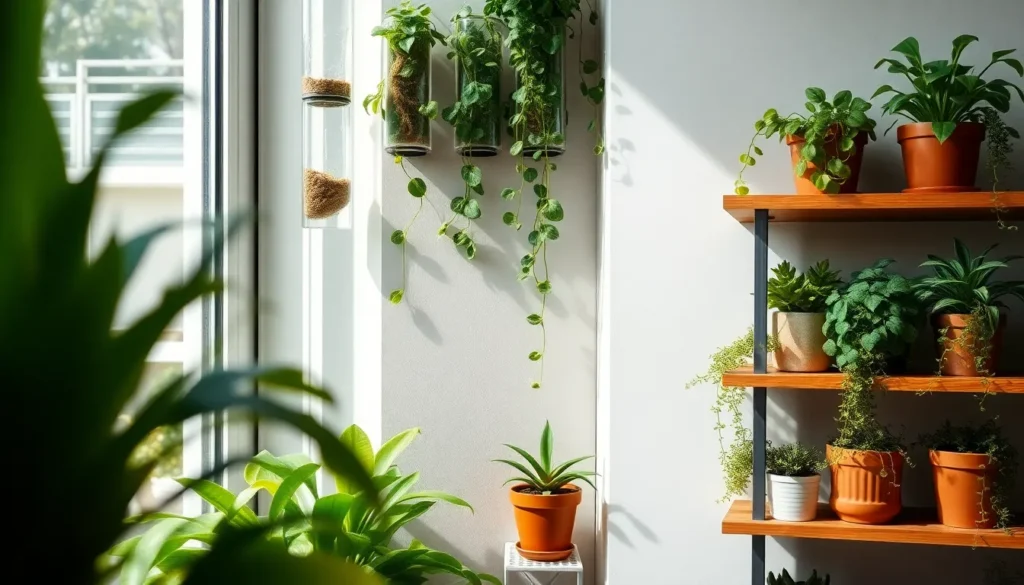Imagine transforming your cozy nook or bustling city apartment into a lush oasis, where your favorite plants thrive and bring life to your indoor space. Whether you’re just beginning your gardening journey or a seasoned plant enthusiast, “Indoor Garden Ideas for Small Spaces” is your ultimate guide to cultivating a vibrant indoor garden that fits perfectly within your home.
In this guide, you’ll discover creative and innovative ways to maximize your space, turning even the tiniest corner into a green sanctuary. With practical tips and easy-to-follow techniques, you’ll learn how to nurture your plants efficiently, ensuring they flourish and reward you with their natural beauty and tranquility.
Embark on this gardening adventure with us, and you’ll find the joy of watching your indoor garden grow and transform. Armed with the insights and strategies shared here, both new and experienced gardeners will feel empowered to create their own verdant retreat, no matter how limited their space.
Maximize Vertical Growing Space
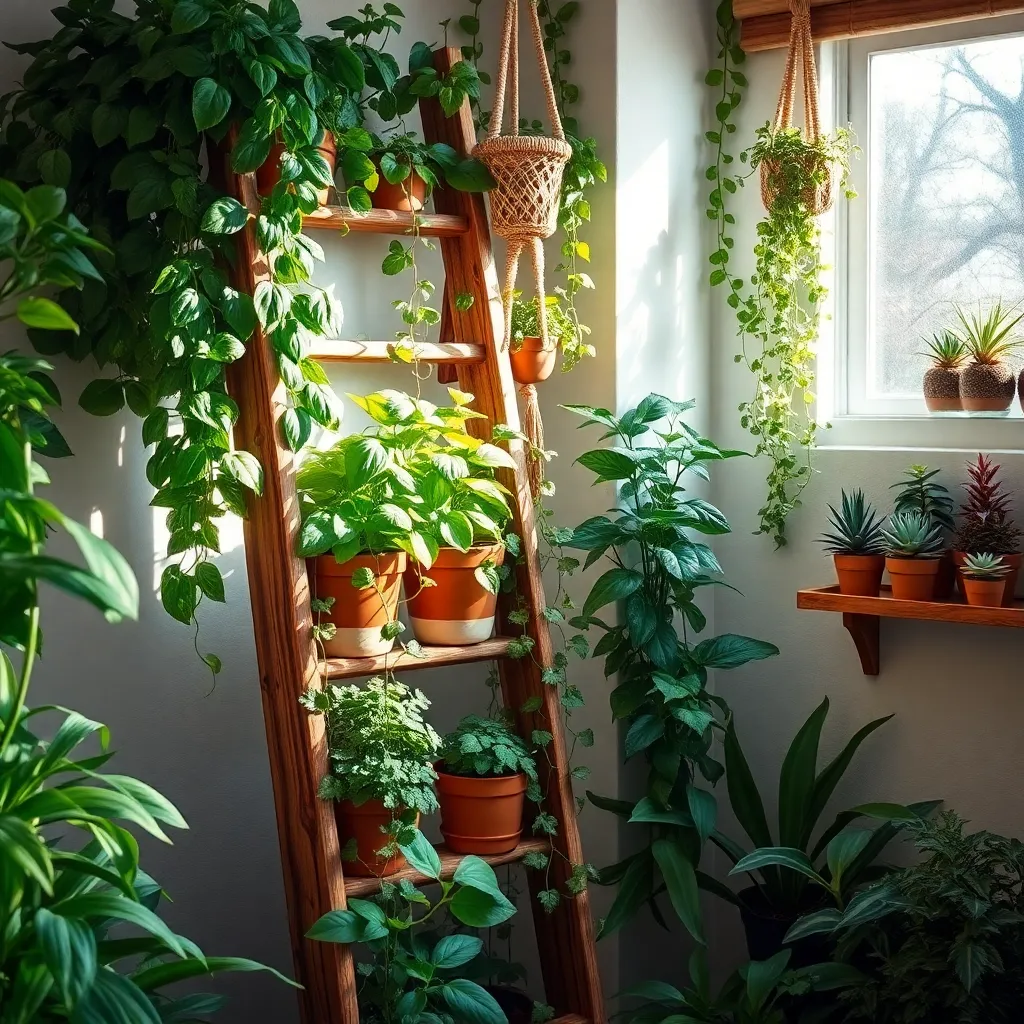
Maximizing your vertical growing space can transform even the smallest area into a lush garden. Consider using wall-mounted planters or vertical garden kits to utilize empty wall space effectively.
Hanging planters are a great option for those with limited floor space. Choose lightweight materials and ensure that plants receive adequate light by positioning them near windows or using grow lights.
Climbing plants such as pothos or ivy are perfect for vertical gardening. Provide a supportive trellis or stakes to encourage upward growth, and regularly prune to maintain shape and promote healthy growth.
For those looking to grow herbs, consider a tiered vertical planter. This setup allows you to plant a variety of herbs in a compact area, ensuring each receives the right amount of light and water.
Choose Compact Plant Varieties
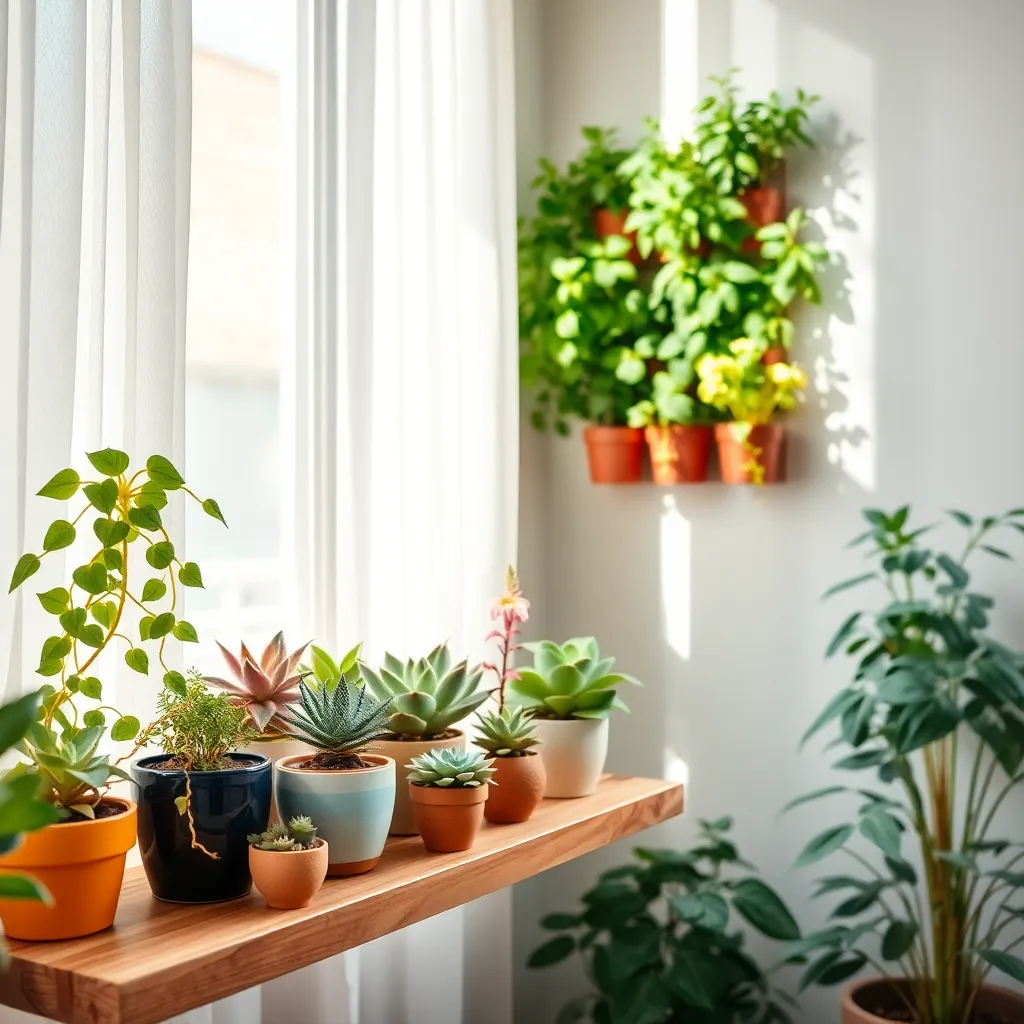
When space is limited, choosing compact plant varieties can make a world of difference in your indoor garden. These smaller plants are bred to thrive without sprawling, making them perfect for cozy environments.
Consider varieties like dwarf herbs, which not only save space but also provide fresh flavors for your kitchen. Thyme, basil, and rosemary are excellent choices because they grow well in small pots and have manageable root systems.
For those who love the beauty of flowering plants, opt for compact versions of popular choices such as African violets or mini orchids. These plants require bright, indirect light and prefer well-draining soil—use a mix that retains some moisture but doesn’t stay soggy.
Advanced gardeners might explore bonsai trees, which are artfully pruned to maintain a small size while adding a unique aesthetic. They require a bit more care, needing regular trimming and a specific watering schedule, but they can be a rewarding challenge for those looking to expand their indoor gardening skills.
Utilize Multi-Functional Planters
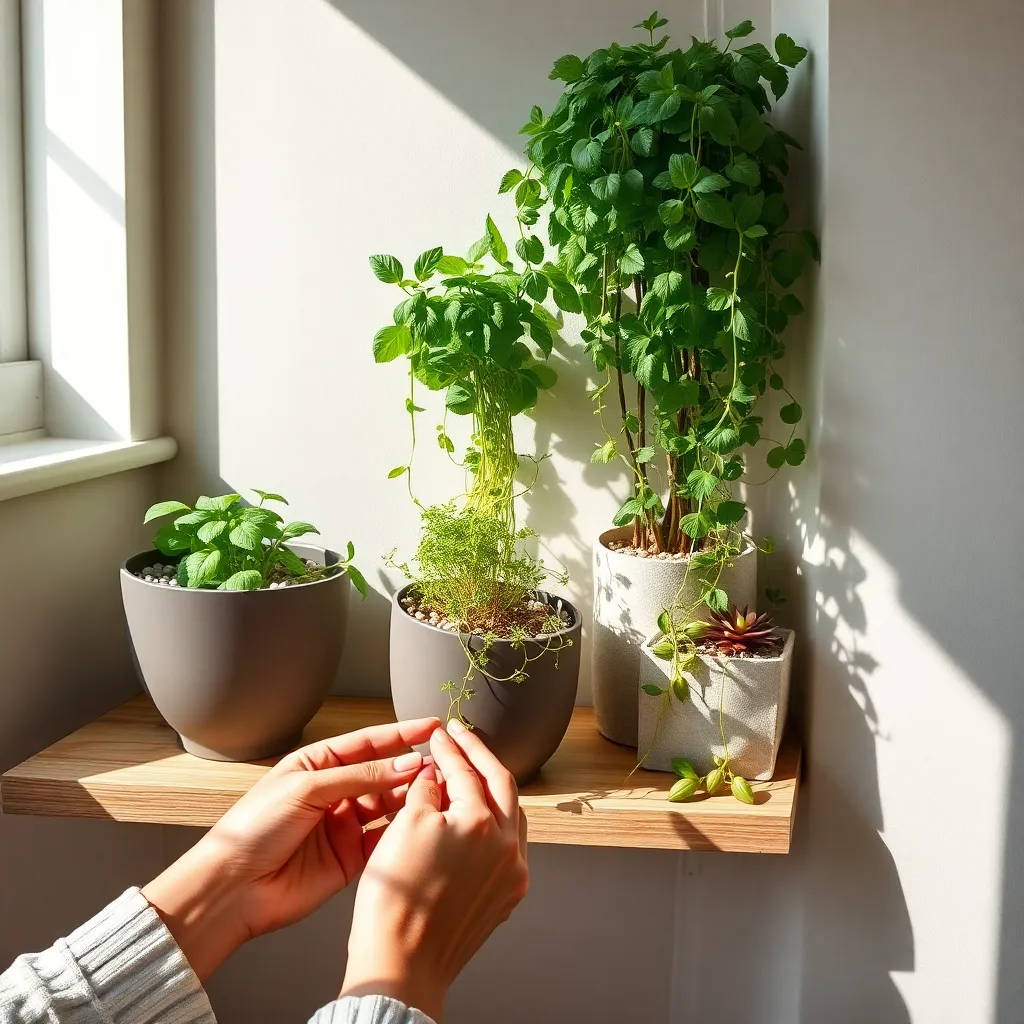
Multi-functional planters can be a game-changer for indoor gardening in small spaces. These planters not only save space but also serve additional purposes, such as providing storage or serving as decorative elements.
Consider using planters with built-in shelves or pockets to maximize vertical space. This allows you to grow a variety of plants, such as herbs and succulents, in a compact area while keeping your gardening tools or accessories neatly stored.
For an advanced approach, opt for self-watering planters that reduce the need for frequent watering. They are particularly beneficial for busy gardeners, as they maintain consistent moisture levels, ensuring your plants thrive even if you forget to water them occasionally.
When choosing multi-functional planters, prioritize those made from durable materials like ceramic or metal, which offer longevity and aesthetic appeal. Ensure these planters have adequate drainage holes to prevent waterlogging, which can harm your plants.
Incorporate Hanging Plant Displays
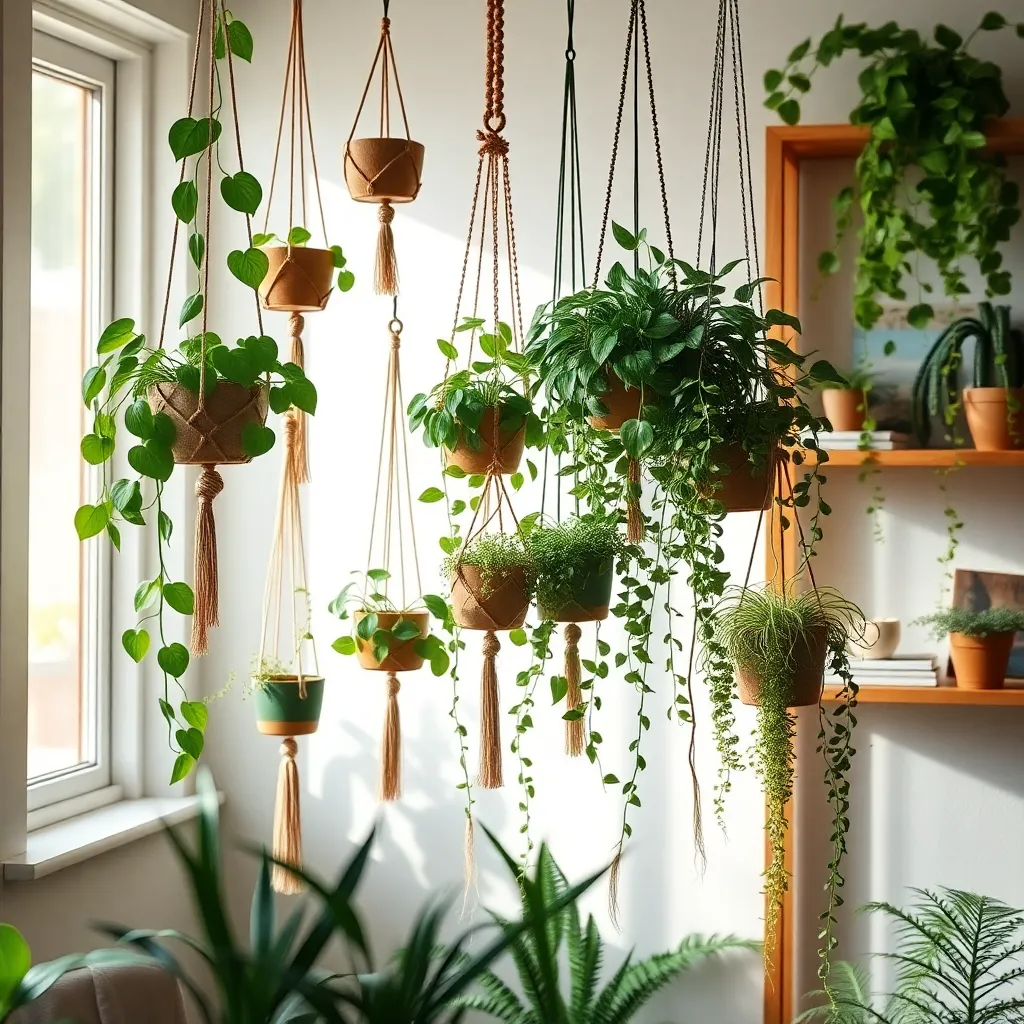
Incorporating hanging plant displays is an excellent way to maximize vertical space in your home. Begin by selecting plants that thrive in the specific light conditions of your room, such as ferns for low light or succulents for bright, sunny spots.
Consider using lightweight potting soil specially formulated for indoor plants to ensure proper drainage. This not only helps prevent root rot but also makes it easier to hang the planters without excessive weight.
To create an eye-catching display, experiment with different heights and textures by combining trailing plants like pothos with bushier varieties like spider plants. Rotate your plants every few weeks to ensure even light exposure and encourage balanced growth.
Advanced gardeners can try their hand at creating bespoke macramé hangers or using unique containers such as repurposed kitchen colanders or wicker baskets. Keep in mind that hanging plants often dry out faster than those on the ground, so check moisture levels regularly and water accordingly.
Optimize Natural Light Sources
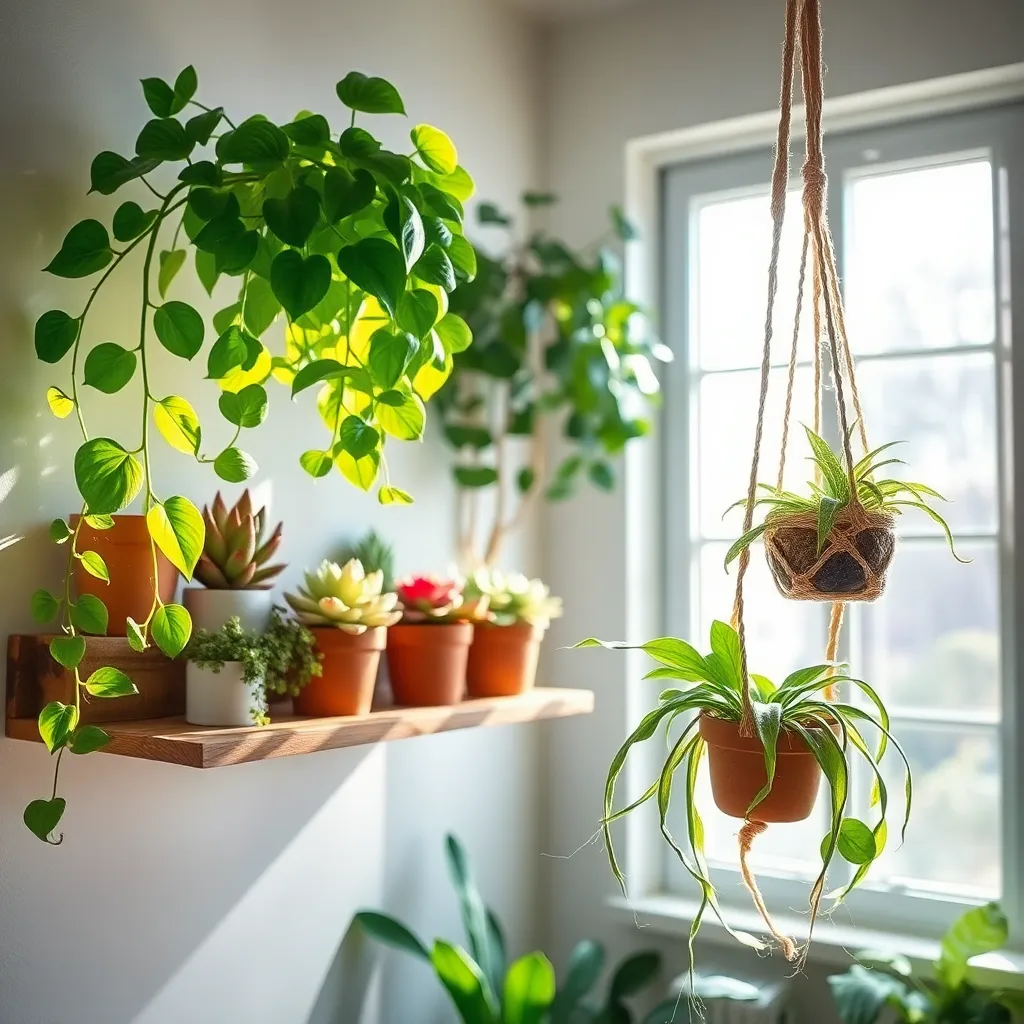
Maximizing natural light sources is a crucial step in creating a thriving indoor garden in small spaces. Begin by assessing where sunlight enters your home the most, such as south or west-facing windows, which typically receive more sunlight throughout the day.
Position plants close to these windows to ensure they soak up plenty of light, but be mindful of potential heat from direct sun exposure. For plants that prefer indirect light, like ferns or peace lilies, you can use sheer curtains to diffuse the light and protect delicate leaves from scorching.
Consider rotating plants weekly to promote even growth and prevent them from leaning towards the light source. Use mirrors strategically to reflect and amplify natural light, especially in darker corners, which can help your plants receive more consistent illumination.
If natural light is limited, supplement with LED grow lights positioned about 12 inches above plants for optimal growth. Choose full-spectrum lights, which mimic natural sunlight and cater to the diverse needs of various plants, ensuring a vibrant and healthy indoor garden.
Conclusion: Growing Success with These Plants
In nurturing the delicate balance of relationships, the article “Indoor Garden Ideas for Small Spaces” highlights five key concepts: creating shared spaces, cultivating patience and growth, embracing creativity together, fostering communication through shared projects, and cherishing small victories in your journey. Each of these principles serves as a metaphor for cultivating not only a flourishing indoor garden but also a thriving relationship. By designing shared spaces, you and your partner can strengthen your bond, while patience and creativity can transform your living area into a sanctuary of connection.
As an actionable next step, start by selecting a small plant to nurture together, allowing it to symbolize your commitment to growth and care. This simple act can encourage dialogue, teamwork, and a deeper connection.
Don’t let these insights slip away; bookmark this article now for easy reference as you embark on your journey of growth and togetherness. Remember, just like a garden, relationships require ongoing attention and nurturing. By integrating these concepts into your daily life, you are sowing seeds for future success and fulfillment. You’re empowered to create a harmonious home that reflects the love and effort you invest in your relationship.

